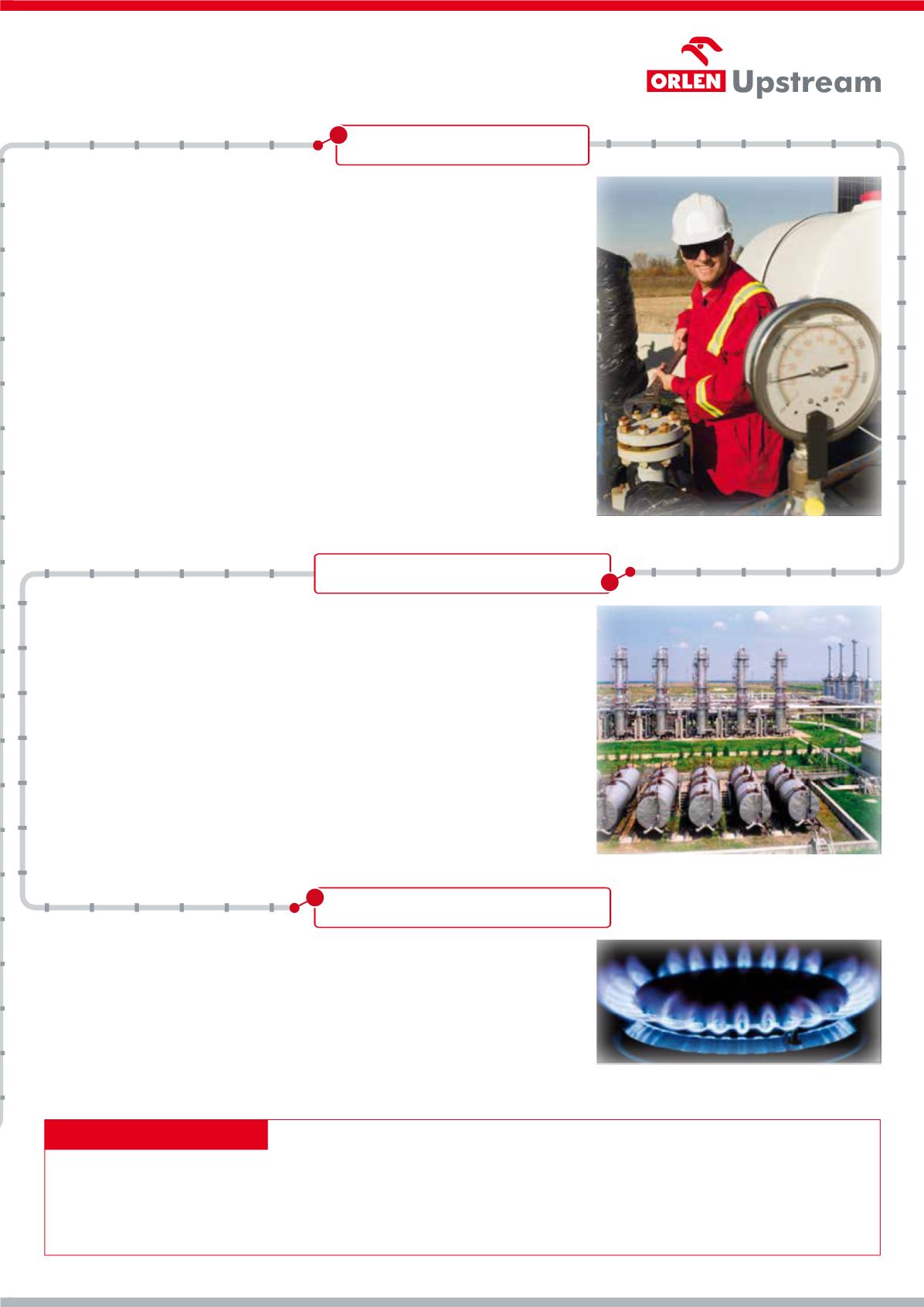
EARTH TO YOUR GAS STOVE
3
N
atural gas is widely used in industrial production (chemical plants, nitrate
plants, etc.) but it is also a type of fuel popular with individual customers,
who use it for heating their homes, heating water or for gas cookers. Natural
gas is also used in technological processes (e.g., in the production of detergents,
paints, synthetic fibres, and many others), in the district heating industry, air
conditioning or cogeneration devices, and as car fuel.
natural gas is environmentally-friendly fuel?
Amongst the three most common primary fuels - that is, coal, fuel oil and natural gas -- the latter is the most environmentally-
friendly source and carrier of energy. Natural gas consists almost exclusively of methane and the neutral nitrogen. It does not
contain large quantities of sulfur or heavy metals, as a result of which its combustion does not generate particulate matter or
any other solid waste. In comparison with coal and fuel oil, natural gas emits significantly less nitrogen oxides (NOx) and the
greenhouse-effect causing CO
2
.
P
reparing natural gas for transport usually means drying it below required
point. Dew point is a temperature at which, at the given gas composition and
pressure, the condensation of the liquids begins. However, before gas is sent to
the pipeline, the pressure of its flow must be adjusted to the conditions in the
transmission network. Gas is compressed at a compressor station. Compressor
stations are surrounded by an exclusion zone and sited in such a way as to
minimise their impact on the environment and the people living nearby.
The most common method of transporting gas is by pipeline. There are two
types of pipelines networks:
n
Transmission networks, used to transport large quantities of gas from its production
sites to the areas of its largest consumption,
n
Distribution pipelines - branching off from the mains and they provide individual
customers with gas.
An increasingly popular method is the transformation of gas into liquid (LNG,
or Liquid Natural Gas) and transporting it in its liquefied form. Thanks to
condensation, the volume of gas is reduced by a factor of 600. Currently, about
25% of gas sold in the world is transported in its liquid form.
D
epending on its purpose, natural gas from the processing plant ends up in
gas storage facilities, or in distribution networks, managed by approved
operators, who coordinate its further transmission and manage its transport.
Stored natural gas is considered a strategic reserve, and it helps increase the
country’s energy security. Moreover, storing gas makes it possible to deal with
seasonal demand fluctuations, and short-term daily deficits of gas. EU law
obliges Poland to keep a permanent reserve of natural gas. Currently, there are
six underground gas storage facilities in the country, with a combined volume
of 1.8 billion cubic metres, which make it possible to hold a 49-day reserve of
natural gas. Gas can be stored in two ways:
n
underground - in natural geological formations (e.g., salt caverns or depleted
gas and oil deposits),
n
on the surface - in purpose-built tanks.
Transport of natural gas
Storage of natural gas
Use of natural gas
DID YOU KNOW THAT:


